Unleash Your Inner Survivor
Essential Gear for Conquering Wilderness Challenges
If a man does not keep pace with his companions, perhaps it is because he hears a different drummer. Let him step to the music which he hears, however measured or far away.
- Thoreau [Walden]
On a recent trip to Alaska, I hunted on an island with no trails and steep terrain. The island contained brown bears and was uninhabited by humans. No roads, no people. In a situation like this, rescue wouldn’t be quick.
Our level of preparedness and what we consider “essential” gear determines our success or failure on our chosen journey. I’ve always been fascinated with survival kits, a small package of essentials utilized to keep me safe and alive in an emergency.
I asked author
(), who served in the US Marine Special Operations, for advice on building a kit. His response cuts to the chase in terms of actually being prepared and not just buying a bunch of stuff thinking you’re prepared:The first requirement is having a survival mindset. It doesn’t matter what you have in your kit without the attitude to survive. Equally important are the skills to use the items in your kit. What you have doesn’t matter if you can’t use it. Your kit might have 50’ of fishing line and a few rusty hooks, but can you catch a fish? Have you used a magnesium block to start a fire?
Carrying the gear isn’t enough. You need to be comfortable and capable of using it when you’re injured, wet, and cold. This underscores the importance of not just having the gear, but also the skills to use it effectively.
I also keep as much of my kit on my body as possible. There are a hundred ways to get separated from your ruck. Having a good knife, lighter, water source, and survival blanket on your body might be enough to save your life.
Most of us experience moments where we face the unexpected: power outage, car trouble, or getting lost on a hike.
My survival kit is different from my medical kit. My medical kit was at one time packed in a 1-gallon Ziplock bag, but it’s now in a more durable case (Eberlestock makes a number of cases suitable for this purpose, and I recommend them all. If the IndiTAK pouch is out of stock, then use their Multipack):
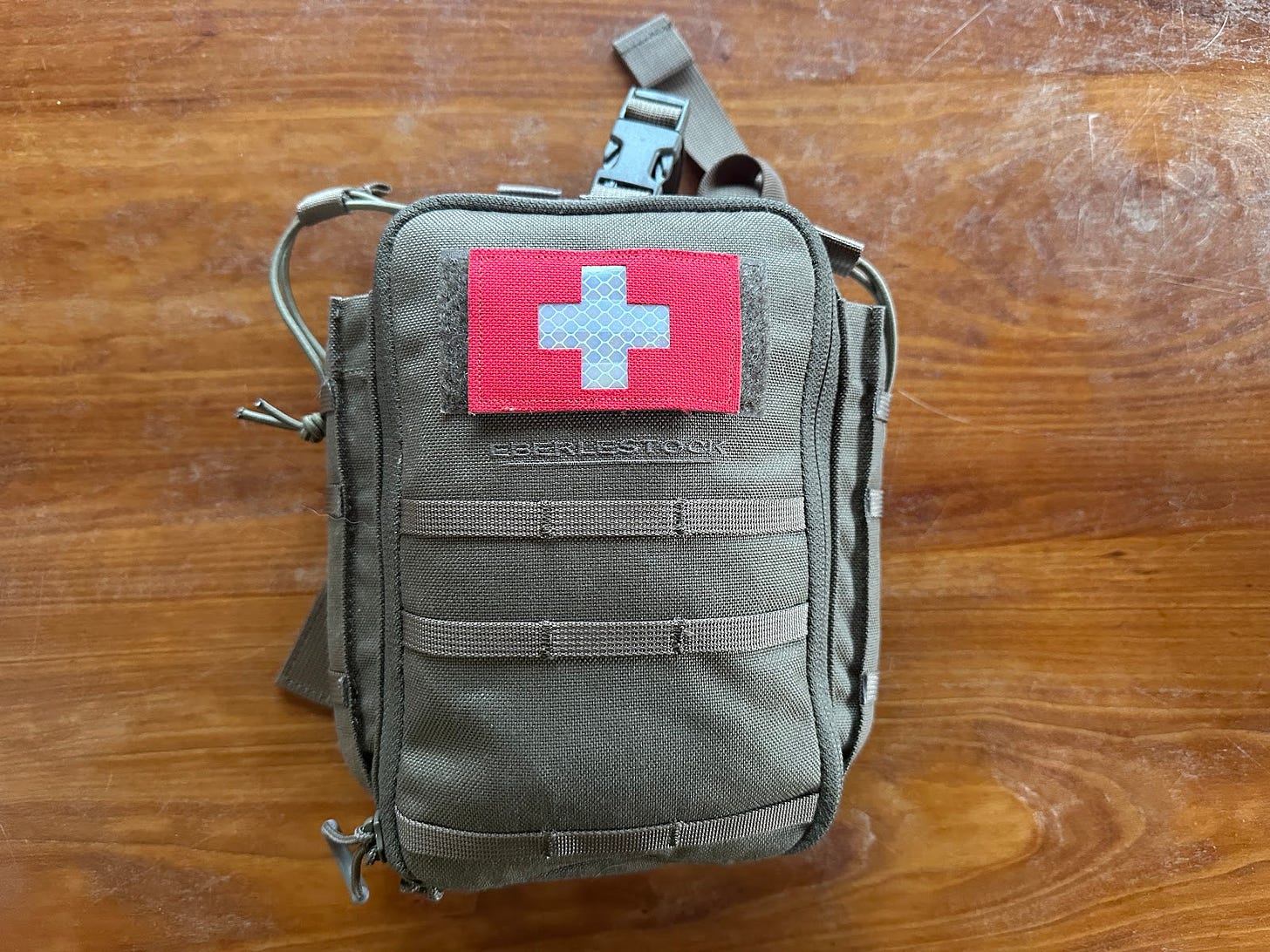
Yes, both kits are essential and interrelated, but a survival kit has the gear needed to get by in the particular situation you’ve put yourself in.
There’s no time of year I use a survival kit more than hunting season. For three months, I routinely pack these essentials into a kit that gives me peace of mind.
Minimalism Redefined
My first survival kit was a store-bought med kit from EMS that I hardly ever opened.
Neatly packaged, I never used it other than for the pre-packaged Bandaids. One time I needed to start a fire and I realized this med kit wasn’t really a survival kit– I needed something else to fit my on-the-ground needs.
Evolution: Lessons Learned from Field Mistakes
I slimmed down the next iteration, inspired by Larry Benoit’s hunting style: only the essentials, simple and lightweight, but enough to survive (in theory), as Benoit described:
Travel light. Travel efficiently. Take what you need to succeed in what you are attempting to do and take no more
(p.22, How to Bag the Biggest Buck of Your Life)
My interpretation of this approach included the following items:
Rope (used for hauling deer, making a splint, general purpose emergency item)
Extra ammunition (used for signaling to rescuer if are lost)
Baggy with spices. If you’ve harvested an animal but are forced to spend a night in the woods, you can use this to season the meat that you cook over a fire).
Honestly, I don’t always pack a baggy with spices, and what it indicates is both aspirational and terrifying. The idea of being so lost or stranded that I resorted to staying in the woods overnight and eating part of my deer over a fire is a little unsettling, yet I also think it would be pretty amazing.Firestarter. The picture below includes birch bark, matches, and a lighter.
Compass
Notice I didn’t carry a headlamp? The kit contained only what I could fit into my pockets, nothing more. I didn’t bring water and planned to eat snow or drink from streams when thirsty.
From Minimal to Essential: Upgrading Your Survival Gear for Every Adventure
As a father and husband, I felt responsible for doing my best to stay alive, which prompted changes to my kit. I’m a minimalist in many ways but have become less so as I’ve weighed the pros and cons of having a lighter pack versus making it home safely. The next iteration of my survival kit had more items, including:
a headlamp
Advil (for sore muscles)
The fire-starter material is now stored in an old medication bottle to keep it bone-dry.
Water bottle (not pictured). I recommend a classic Nalgene or Hydrapak collapsible water storage.
This kit required me to always carry a bag (instead of everything crammed in my pockets).
The Comprehensive Survival Kit: Ready for Anything, Anytime
This is my go-to survival kit for ninety percent of my outings, whether ten minutes behind my house in a state forest or a dozen miles deep in a national forest. This iteration added the following items:
Zip ties (securing gear)
Voile straps (securing gear, splint)
Whistle (emergency signaling)
S.O.L. Emergency Bivy (warmth, protection from elements)
What I like about this survival kit is that I can quickly transfer it and take it with me, whether hiking, hunting, boating, fishing, etc. It’s a standalone item I only open in an emergency.
And that’s one of three key tenants of a survival kit I’ve learned:
Don’t cherry-pick the kit.
Re-assess it from time to time.
Replace perishables regularly, including food, batteries, water purification tablets, and drugs (like Advil).
My essential gear that I like to have with me when I hike, backpack or cross country ski usually includes the following: some kind of emergency communication device such as an iPhone (14 or higher) or a Garmin In-Reach. I also like to carry a portable charger such as those made by Anker.
In case I am out longer than expected, I like to carry a packable jacket with a hood for warmth. I have an old Eddie Bauer puffy with a hood that packs down very small - maybe to 3 or 4 ounces. An emergency bivy sack is nice to have in case I need to spend a night in the woods. Other essentials include a water filter such as a LifeStraw, a headlamp and a fire starter.
For emergency energy, I like to carry energy gels as a back-up food source - they can pack a lot of calories in a small waterproof packet. I prefer the caffeinated gels. Finally, I like to have some kind of paper map in addition to downloading a map in advance onto my mobile device.
Expedition Ready: Packing for Remote and High-Risk Adventures
For the times I’m far from rescue, the kit changes. When I say “far from rescue,” I mean probably days, not hours, from receiving proper medical treatment.
This survival kit includes everything I usually carry, plus:
Folding pruning saw (helpful if you need to cut wood for an emergency fire)
Extra clothing, especially socks and a hat. I recommend baselayers from Patagonia, which are durable, compact, and warm.
Back-up charger for phone and inReach
Extra baggies
Chapstick
Extra headlamp batteries
Aluminum cup for drinking and boiling water
SAM Splint (helpful for securing broken/sprained limbs)
When this gear is all packed up, it looks like this:
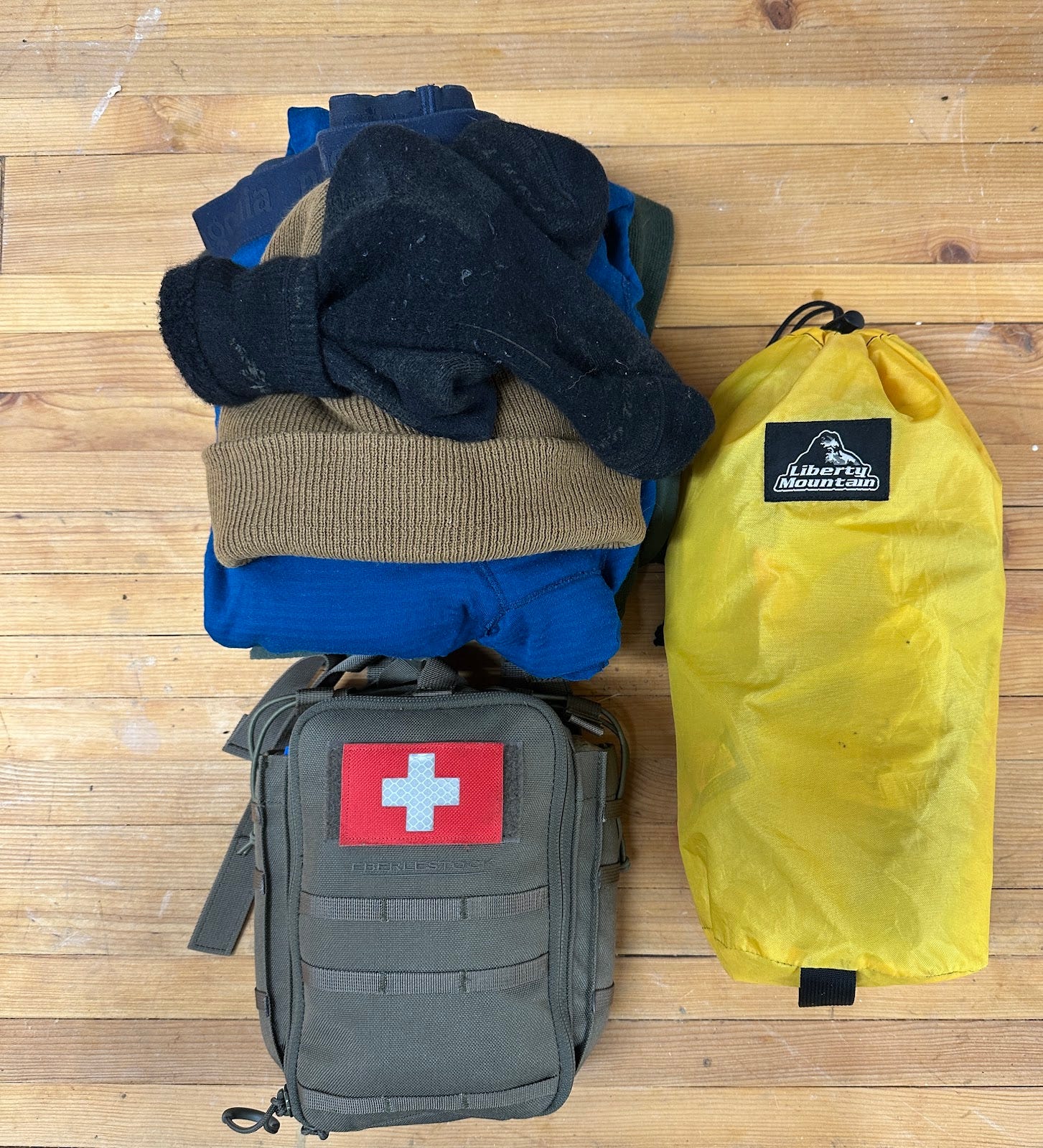
All the survival kit contents fit into a stuff sack that isn’t opened unless it is an emergency. Consolidating and isolating these items into a single sack means the items are not floating around my bag or getting lost. This also saves time when I’m packing and unpacking often; i.e., I don’t need to spend a bunch of time at the beginning of each trip trying to figure out where all the items are located.
I recommend placing the extra clothing in a sealed Zip-Lock bag so it stays dry.
How do you Prepare for the Worst?
The weight of the kit, level of risk & fear tolerance, and willingness to put other people in harm’s way (e.g., first responders, other people in your party) all influence the contents of my survival kit. It changes with time, but my goal has always been to be ready for the unexpected.
If you’re thinking about building your own kit, consider the following:
What are your needs? Trip duration, activity (hiking, canoeing, skiing, etc.), risk (e.g., resort skiing versus backcountry skiing), and competency (i.e., age and experience of trip participants) are key considerations.
Start small, then build out. Don’t try to pack for every possible scenario until you know what your activity will be.
Test and practice. Purchasing a cool-looking firestarter survival tool from Amazon may seem like a good idea. But unless you practice using it before hitting the field, you could be unpleasantly surprised when you crack open the package and it falls apart before your eyes.
How do you prepare for those scenarios where things don't go as planned?
Thanks to and for contributing to this edition of Next Adventure.
Check out their excellent publications:



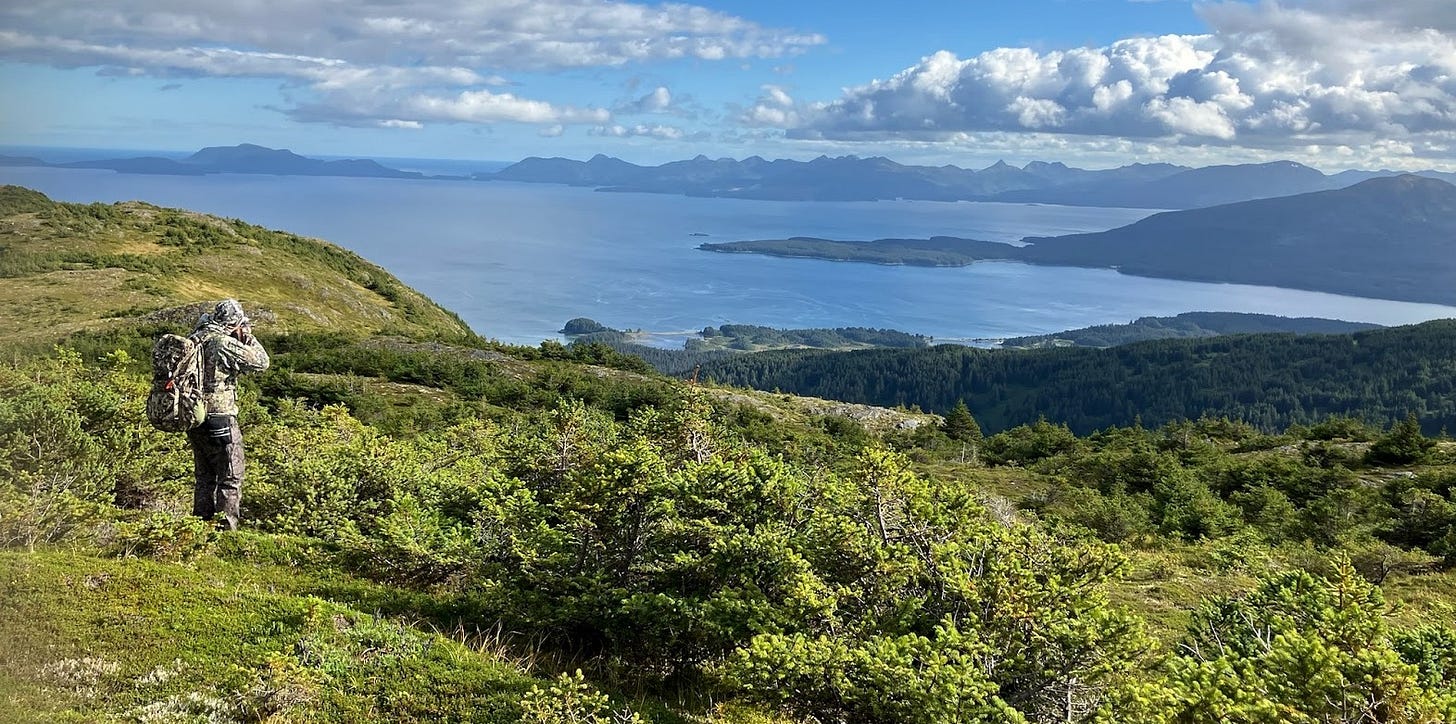

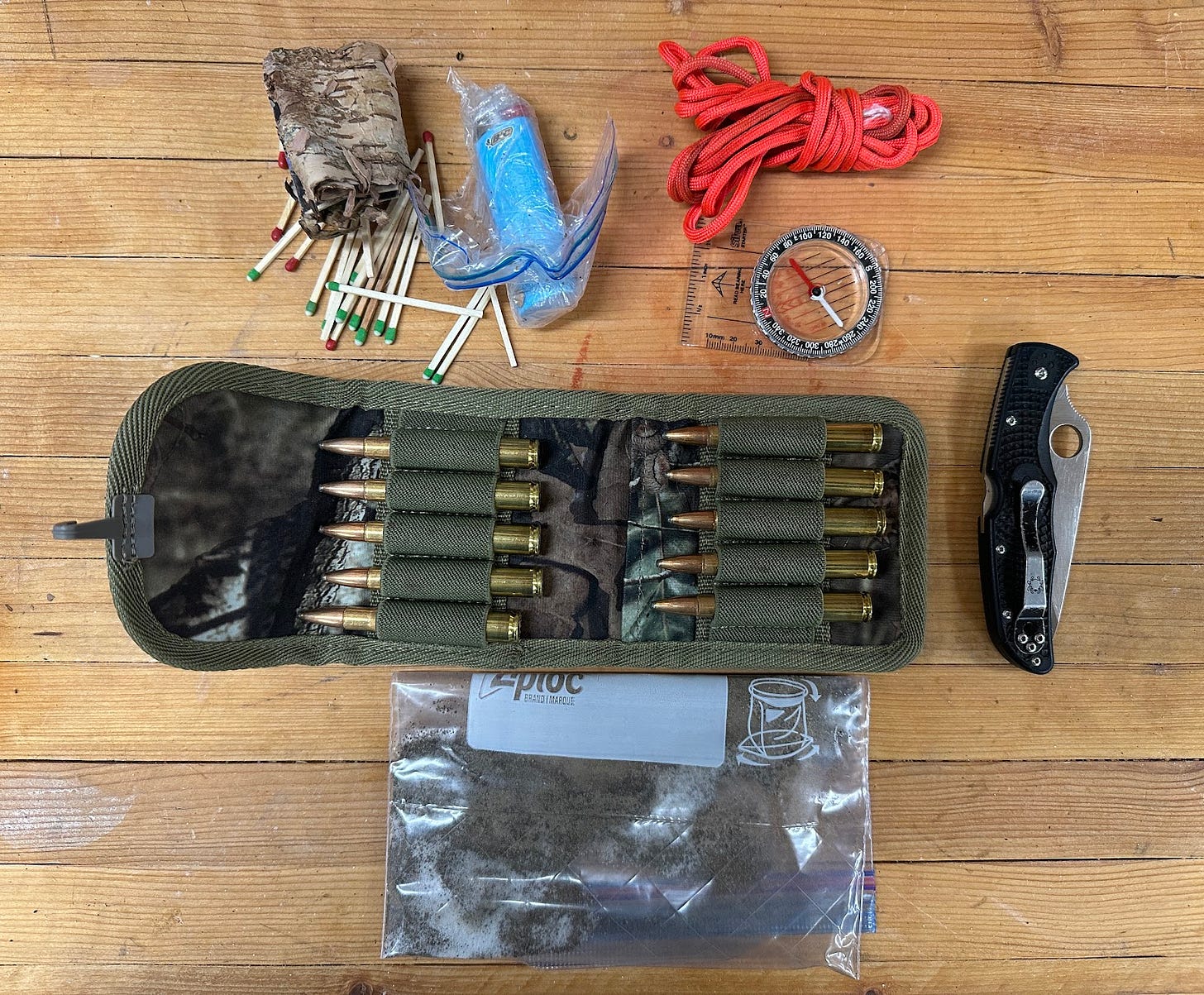
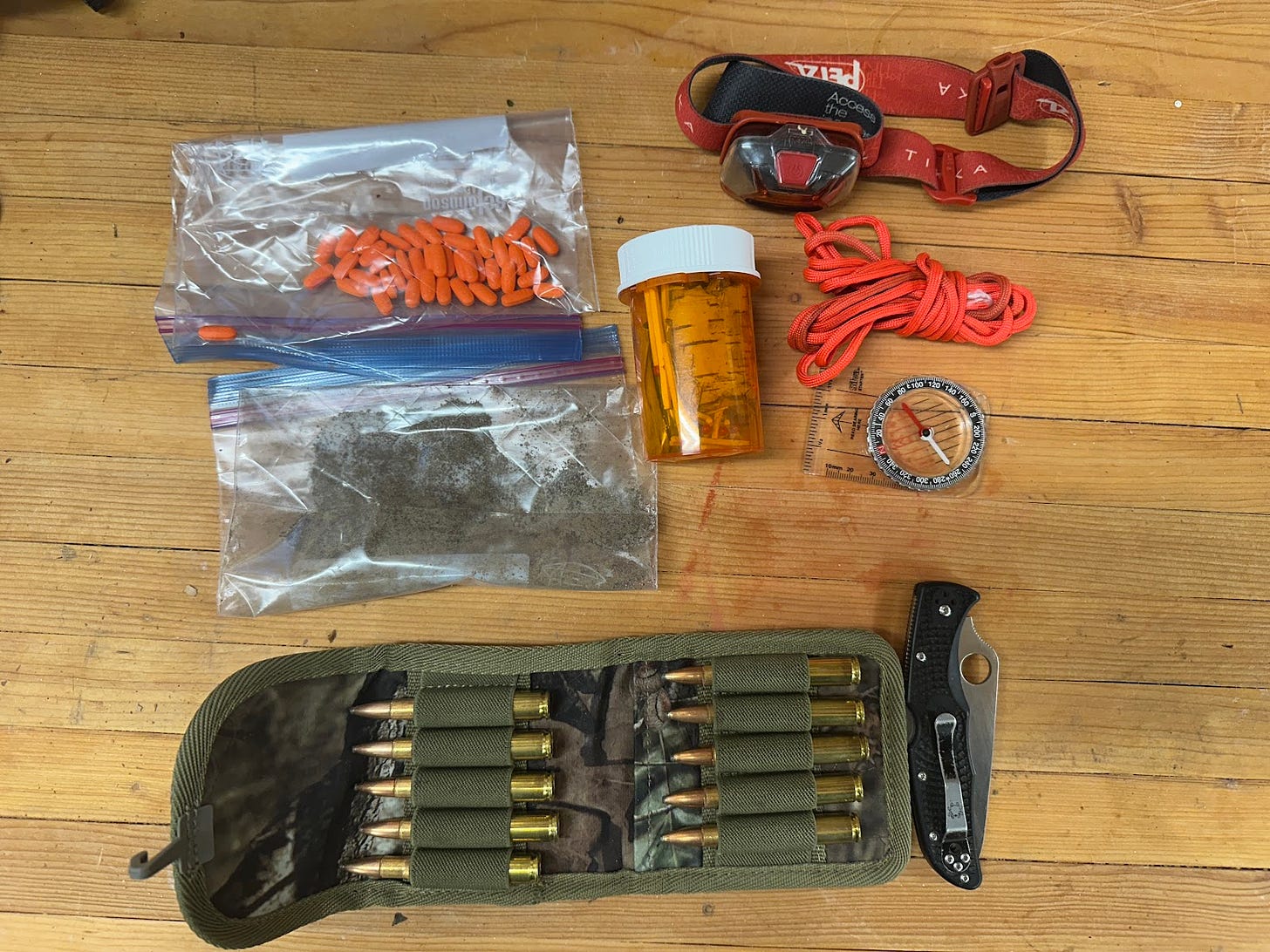

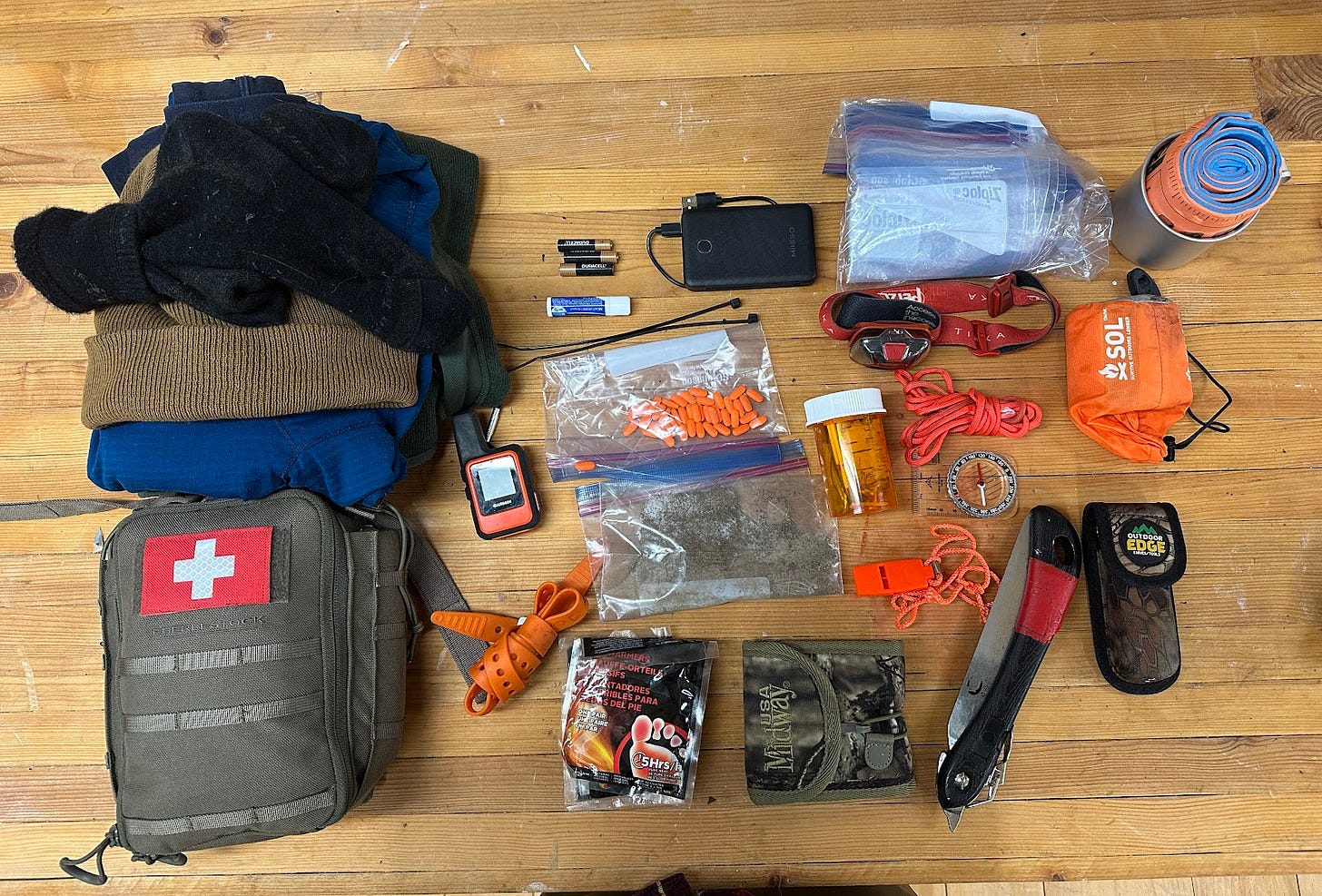


Great posting. I wish more people would read and consider their own safety and preparation.
You say the most important thing at the very beginning which boils down to: nothing matters if you don't have the will to live, a survival mentality. Little is worse than retrieving a body a quarter mile from a trailhead, a pack with all needed beside.
Kits change, mostly with experience. More time outside often means different skill use, distance, nights, etc.
What I would add, practice of "What if" scenarios. A conscious consideration of, "If this were to happen, this is how I might manage." That means if it happens, it is not a first time consideration.
Great post, Jesse. Funny, too -- I just finished "Tough Rugged Bastards" last night, so was wild to see John's name pop up here. No such thing as coincidences, right? Repacking my own "survival lite" kit now before I head out for a quick hunt in the morning.